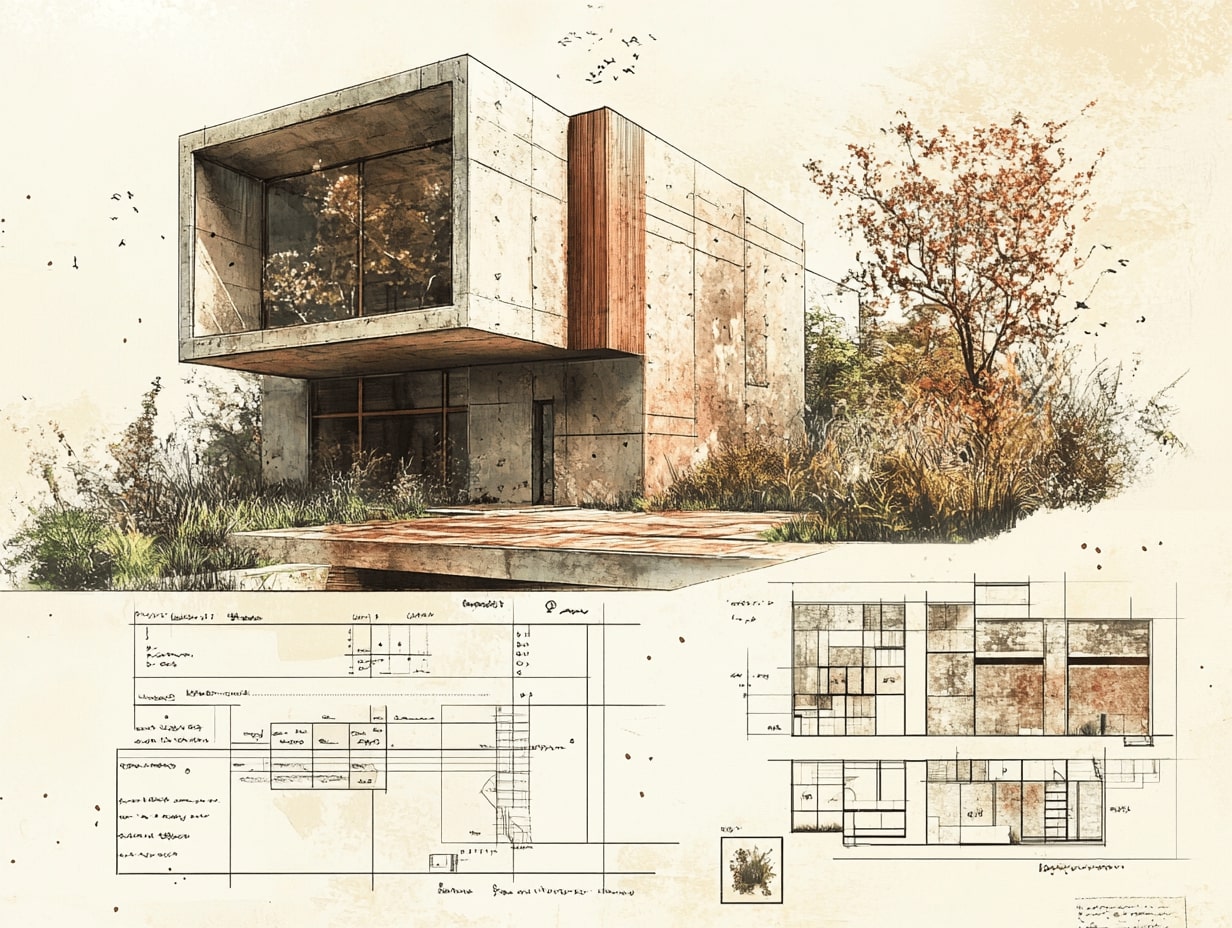- Home
- Articles
- Architectural Portfolio
- Architectral Presentation
- Inspirational Stories
- Architecture News
- Visualization
- BIM Industry
- Facade Design
- Parametric Design
- Career
- Landscape Architecture
- Construction
- Artificial Intelligence
- Sketching
- Design Softwares
- Diagrams
- Writing
- Architectural Tips
- Sustainability
- Courses
- Concept
- Technology
- History & Heritage
- Future of Architecture
- Guides & How-To
- Art & Culture
- Projects
- Interior Design
- Competitions
- Jobs
- Store
- Tools
- More
- Home
- Articles
- Architectural Portfolio
- Architectral Presentation
- Inspirational Stories
- Architecture News
- Visualization
- BIM Industry
- Facade Design
- Parametric Design
- Career
- Landscape Architecture
- Construction
- Artificial Intelligence
- Sketching
- Design Softwares
- Diagrams
- Writing
- Architectural Tips
- Sustainability
- Courses
- Concept
- Technology
- History & Heritage
- Future of Architecture
- Guides & How-To
- Art & Culture
- Projects
- Interior Design
- Competitions
- Jobs
- Store
- Tools
- More
7 Essential Elements for a Successful Architectural Portfolio

Creating a standout architectural portfolio is crucial for grabbing the attention of potential employers or clients. In a competitive field, it’s not just about showcasing our skills but also presenting them in a way that tells a compelling story. A well-crafted portfolio can open doors to exciting opportunities and set us apart from the crowd.
To achieve this, we need to focus on a few key elements. From selecting our best work to crafting an engaging narrative, every detail matters. We’ll explore what makes a portfolio not just good but exceptional, ensuring that our unique vision and capabilities shine through. Let’s dive into the essentials that will help us create a portfolio that truly resonates.

Table of Contents
ToggleKey Elements of a Successful Architectural Portfolio
Choosing the Right Projects
Selecting projects that showcase diverse skills is essential. Our portfolio should include sketches, drawings, renderings, and completed designs. This diversity demonstrates our versatility and ability to handle various aspects of architectural design. Focusing on quality over quantity ensures that each project included represents our best work. Highlighting projects that align with the interests or values of the audience or institution helps tailor our portfolio effectively.
Demonstrating Design Process
Showcasing our design process can set our portfolio apart. Including concept sketches illustrates the initial creative ideas and thought process. Development drawings show how these concepts evolve into detailed designs, highlighting technical skills. Presenting 3D renderings and visualizations communicates design intent and aesthetics effectively. Including photographs of physical models or prototypes adds a tangible aspect to our work. Using annotations to explain design decisions, materials, and sustainable practices provides additional context.
Creating Visual Consistency
A visually consistent portfolio enhances readability and leaves a lasting impression. Maintaining a clean, simple design ensures that our work stands out without distractions. Using a minimalist approach allows the projects to speak for themselves. Consistent typography, color schemes, and layout throughout the portfolio create a cohesive look. This visual harmony not only makes the portfolio more attractive but also professional.

Tailoring Your Portfolio
Understanding Your Audience
Assessing who’ll view our portfolio is crucial to its success. When targeting a prospective employer, we must highlight projects demonstrating skills relevant to the firm’s specialty. For instance, if the office focuses on sustainable design, showcasing eco-friendly projects positions us better.
Customizing Content for Specific Goals
Adapting our portfolio content to align with specific career aims adds impact. If aiming for a role in urban planning, including large-scale projects and community-focused designs becomes essential. Each project should clearly illustrate how our experience aligns with the desired position.
Presentation Formats
Advantages of Digital Portfolios
Digital portfolios offer unparalleled flexibility and creativity. A digital format allows us to incorporate multimedia elements like video walkthroughs and 3D models, enhancing the interactive experience. They are easily shareable through emails or links, making them accessible to a global audience almost instantly. Updating content is more convenient, letting us keep our portfolio current with minimal effort. Additionally, digital portfolios can be optimized for search engines, increasing visibility and attracting more potential employers or clients.
Benefits of Print Portfolios
Print portfolios provide a tactile experience that digital formats can’t replicate. The physical presence of a printed portfolio can make a strong impression during in-person meetings or interviews. Details like paper quality, binding, and layout design can reflect our attention to detail and craftsmanship. Print versions also offer a controlled viewing experience, ensuring that our work is seen exactly as we intend. They are perfect for showcasing high-resolution images and intricate designs, making the visual impact more profound.
Articulating Your Personal Brand
Integrating Personal Statement
A cohesive personal statement is crucial for articulating your brand. It should encapsulate your architectural philosophy and career aspirations in a concise manner. Avoid generic statements; instead, focus on unique experiences and defining moments that shaped your professional journey. Highlight specific projects or roles that demonstrate your values, creativity, and problem-solving abilities.
Example Statement: “My passion for sustainable architecture was ignited during my internship at GreenBuild, where I worked on eco-friendly residential projects. I aim to merge innovative design with sustainability to create impactful spaces.”
Showcasing Professional and Academic Experience
Laying out a clear trajectory of your professional and academic achievements strengthens your portfolio. Segregate these experiences to avoid confusion and ensure each section is easily navigable. Provide high-quality images or renderings of completed projects and detailed descriptions of your role and contributions.

Professional Experience:
- Firm A: Designed sustainable commercial buildings, led material selection for eco-friendly constructions.
- Firm B: Worked on urban planning projects, collaborated with a multidisciplinary team to create resilient city layouts.
- University X: Thesis on adaptive reuse of industrial buildings, focusing on transforming obsolete structures into community hubs.
- University Y: Participated in a study abroad program in Japan, exploring traditional and modern architectural synergies.
Clearly articulating your personal brand through these elements will help communicate your unique perspective and professional journey to potential employers and clients.
Regular Updates and Maintaining Relevance
Dynamic Content
Maintaining a successful architectural portfolio requires dynamic content. Active portfolios captivate viewers with regularly updated projects and visuals. This not only showcases new skills but also reflects ongoing professional growth. By keeping content fresh, we demonstrate our engagement with evolving design practices. Including recent project updates, continuous learning courses, and latest achievements ensures the portfolio remains current and compelling.
Engaging with Current Architectural Trends
Integrating current architectural trends into portfolios is essential. Trends such as sustainable design, smart technology integration, and minimalist aesthetics should be reflected in projects. This alignment highlights our understanding of contemporary movements and readiness to implement them. Regularly reviewing and updating the portfolio to incorporate these trends shows potential clients and employers that we are in sync with industry standards and innovations. Featuring trends infuses the portfolio with contemporary relevance, setting it apart from static, outdated compilations.

Conclusion
The conclusion of an architectural portfolio should encapsulate the essence of your entire body of work. Focus on the following key elements:
Summary of Skills and Achievements
Summarize the skills and achievements demonstrated throughout the portfolio. Mention specific projects, notable awards, and any accolades that set your work apart. Be concise yet comprehensive to leave a lasting impression.
Reflection on Design Philosophy
Reflect on your design philosophy. Describe how it has evolved over time and its impact on your projects. This helps to align your professional identity with your portfolio’s content.
Future Aspirations
Highlight your future aspirations in the field of architecture. Whether it’s pursuing sustainable design, exploring smart technology integration, or contributing to iconic projects, display your vision clearly. This signals to potential employers or clients your forward-thinking approach.
Contact Information
Include clear contact information. Make it easy for potential employers or clients to reach you. An email address and phone number should suffice, complemented by a link to your professional website or LinkedIn profile.
Call to Action
Encourage the viewer to take the next step. Whether it’s setting up a meeting, visiting your website for more details, or contacting you for a project, a strong call to action can drive engagement.
By integrating these essential elements, we ensure our portfolios not only showcase our best work but also resonate with our audience and foster opportunities for professional growth.
- architect portfolio essentials
- Architectural Portfolio
- architectural portfolio design
- architectural portfolio examples
- architectural portfolio for job application
- architectural portfolio layout
- Architectural Portfolio Tips
- architectural presentation portfolio
- architecture portfolio elements
- architecture portfolio guide
- Architecture Student Portfolio
- best architectural portfolio
- creating a successful architecture portfolio
- elements of architectural portfolio
- how to create an architectural portfolio
- portfolio design for architects
- portfolio strategies for architects
- professional architectural portfolio
- successful architectural portfolio
Submit your architectural projects
Follow these steps for submission your project. Submission FormLatest Posts
Digital Marketing: The New Portfolio for Showcasing Skills and Attracting Opportunities
Discover how digital marketing has revolutionized the traditional portfolio in today's fast-paced...
Essential Tips for a Good Architecture Portfolio to Impress Employers and Clients
Unlock your architectural potential with our essential tips for crafting a standout...
How to Stage a House for an Architectural Portfolio Shoot
A house might look beautiful in person, but through a lens? That’s...
The Process Behind a Successful Architecture Portfolio: Tips for Design and Presentation
Discover the art and strategy behind building a standout architecture portfolio. Learn...












Leave a comment